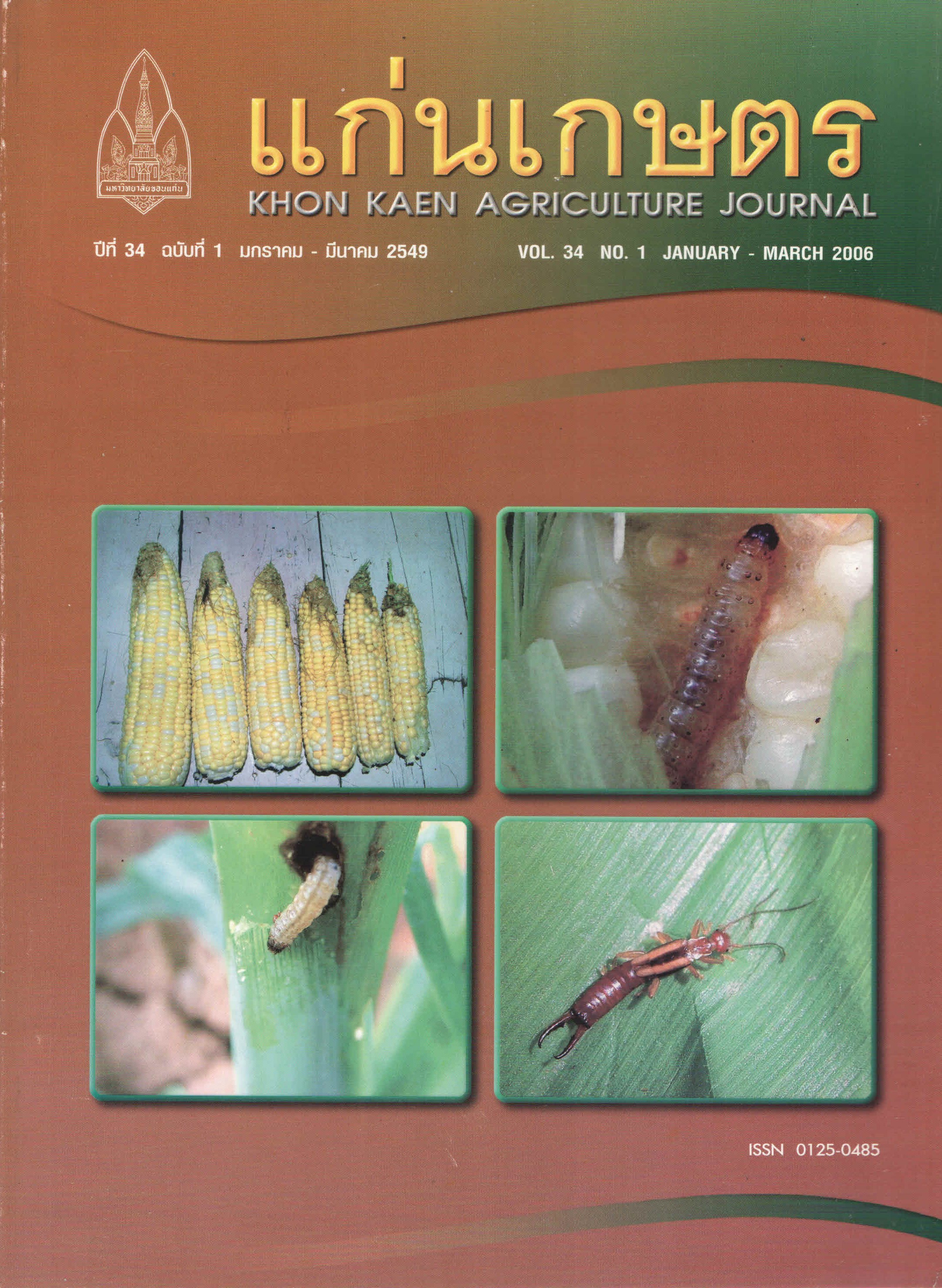Responses of 3 Lao Rice Varieties to Nitrogen Fertilizer
Main Article Content
บทคัดย่อ
·°àπ‡°...μ√ ÛÙ (Ò) : Ú ̆-Û ̃ (ÚıÙ ̆)KHON KAEN AGRIC. 34 (1) : 29-37 (2006)Responses of 3 Lao Rice Varieties toNitrogen FertilizerKhamsavang Sombounkkhanh1, Krirk Pannangpetch2,Pirmpoon Keerati-kasikorn3, and Anan Polthanee2AbstractIndigenous Lao rice varieties have unique characteristics and qualities, but their yields are low. Needs toconserve our environment and to keep the cost of production low would oblige any scheme of yield improvementin the future to rely on increasing the efficiency of N use. The experiment was therefore conducted to investigatethe responses to N fertilizer and N use efficiency (εN) of 3 popular Lao rice varieties, TDK 4, Makhing, and Eloup.The result showed that Makhing had the highest mean grain yield of 8,256 kg ha-1 and εN of 35.87 kg grain kg-1available N. Eloup and TDK 4 achieved the mean grain yields of 7,338 kg ha-1 and 7,316 kg ha-1, respectively. Eventhough Eloup had the highest physiological N use coefficiency (PNUE) of 184.03 kg biomass (BM) kg-1 absorbedN, its harvest index (HI) was the lowest (0.30). TDK 4 had the highest N uptake, comparable HI (0.33), but lowestPNUE (149.48 kg BM kg-1 absorbed N). Makhing had the highest HI (0.35) and comparable N uptake and PNUEthat complement to give it the highest yield and εN. In general, yields increased with increasing N up to the rateof 60 kg N ha-1, over which there was no significantly increase. At this N rate, εN was higher than those at theN rate of 90 and 120 kg N ha-1. Although the εN and HI at N rate of 0 and 30 kg N ha-1 were higher than that at60 kg N ha-1, but shoot dry weight were considerable lower and consequently led to lower yield.


